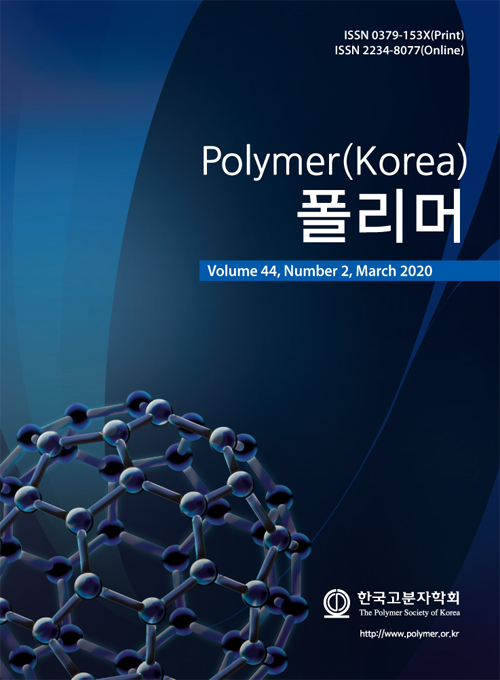The curing behavior of
silicone rubber modified epoxy/clay nanocomposites was studied using a
differential scanning calorimeter (DSC) and an oscillatory rheometer. The
nanocomposites were prepared from the reaction of cycloaliphatic epoxy resins,
silicone rubber containing amine functional group, anhydride hardener and
nano-clay. As the clay content increased until 4 phr, the curing reaction rate
increased, the reaction heat decreased, and the gelation time decreased. The
isothermal cure results were well matched with the modified Kamal’s model.
Therefore, it is thought that the overall cure characteristics can be simulated
by applying a modified Kamal’s model
실리콘 고무로 개질된 에폭시/클레이 나노콤포지트의 경화 거동을 미분주사열량계(DSC)와 진동 레오미터를
이용하여 연구하였다. 지환형 에폭시 수지, 아민기를 포함하는
실리콘 고무, 무수 경화제, 나노클레이의 반응을 통해 나노콤포지트를
제조하였다. 클레이 함량이 4 phr로 증가함에 따라 경화
속도는 증가하였고 반응열은 감소하였으며 젤화 시간은 감소하였다. 등온경화 실험의 결과는 개선된 Kamal 모델에 잘 부합하였다. 이에 개선된 Kamal 모델을 적용하여 본 시스템의 전체적인 경화특성을 모사할 수 있으리라 사료된다
Keywords: silicone rubber, cycloaliphatic epoxy, cure kinetics, chemorheology, nano-clay
- Polymer(Korea) 폴리머
- Frequency : Bimonthly(odd)
ISSN 0379-153X(Print)
ISSN 2234-8077(Online)
Abbr. Polym. Korea - 2023 Impact Factor : 0.4
- Indexed in SCIE
 This Article
This Article
-
2020; 44(2): 163-169
Published online Mar 25, 2020
- 10.7317/pk.2020.44.2.163
- Received on Oct 28, 2019
- Revised on Dec 7, 2019
- Accepted on Dec 23, 2019
 Correspondence to
Correspondence to
- Sangmook Lee
-
Division of Chemical Engineering, Dankook University, 126 Jukjeon-dong, Suji-gu, Gyeonggi-do 16890, Korea
- E-mail: s_mlee@naver.com










 Copyright(c) The Polymer Society of Korea. All right reserved.
Copyright(c) The Polymer Society of Korea. All right reserved.